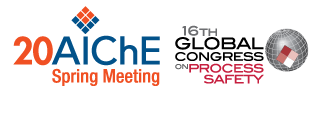

This paper reviews the findings in the book for how process safety is addressed in the upstream industry. It does this as a concept book - at a high level and not excessive detail allowing readers to gain a good understanding of the topic without excess detail.
Drilling is a specialist topic and many staff from downstream have little understanding of the risks and how these are managed successfully. The geological characteristics of a well, the pore pressure and the facture gradient, determine the well design including the casing and cement programs. The greatest hazard is a well blowout and multiple systems help to identify kick events that need to be managed by the drill team before escalation to a possible blowout. Several other process safety events are possible and these can be managed using a well integrity management plan and by following industry codes and standards. The US regulator, BSEE, has published a detailed final drilling rule that mandates many specific requirements. The BOP design needs special attention. One aim is to maintain two safety barriers at all times during drilling.
Onshore production facilities can range in size from small shale sites to large integrated facilities, as in Alaska or the Middle East. Process safety activities for these is little different to those for downstream facilities.
Offshore production facilities can be quite different. Shallow water installations in the Gulf of Mexico tend to be simple and operate at lower production rates. Deepwater facilities, in 1000ft depth or greater, will be floating designs, typically either square shaped floating production units (FPU), or ship-shaped floating production, storage and offloading (FPSO). There are multiple other possible designs as well. These installations can be complex, 3-dimensional designs which bring hazards of high pressure, high production rates close to accommodation and other occupied areas. While conventional hazard identification and process safety studies (e.g. LOPA) are used, guidewords may need to be extended (e.g. ISO 17776, API 14J). Escalation is a key issue and needs detailed treatment offshore, more so than downstream facilities where adequate separation is a benefit. Safety culture is a key issue and is becoming a bigger focus area offshore. Safety metrics for process safety that are customized for offshore have been developed by IOGP 456 and by the Center for Offshore Safety.
Engineering design is similar to downstream with early safety studies carried out in the project definition stages (FEL-1, 2 and 3) and then refined further in detailed design. Inherently safer design concepts need to be included in these early stages when alternative design options are possible. ISD in later stages focuses on specific equipment design and safer layout options. Fire and blast studies and QRA are more common offshore using specialized tools. For example, designs of FPSO or FLNG vessels can include gaps in structures to mitigate vapor cloud explosions. Bow tie risk analysis can be used to provide the operating team with a clear understanding of the safety barriers deployed and their role in ensuring that these are always functional.
The book is scheduled for publication in mid-2020 and it is hoped that this will start a series of more specific topics for upstream process safety.
Presenter(s)
Language
Pricing
Individuals
| AIChE Member Credits | 0.5 |
| AIChE Pro Members | $19.00 |
| Employees of CCPS Member Companies | Free |
| AIChE Graduate Student Members | Free |
| AIChE Undergraduate Student Members | Free |
| AIChE Explorer Members | $29.00 |
| Non-Members | $29.00 |
